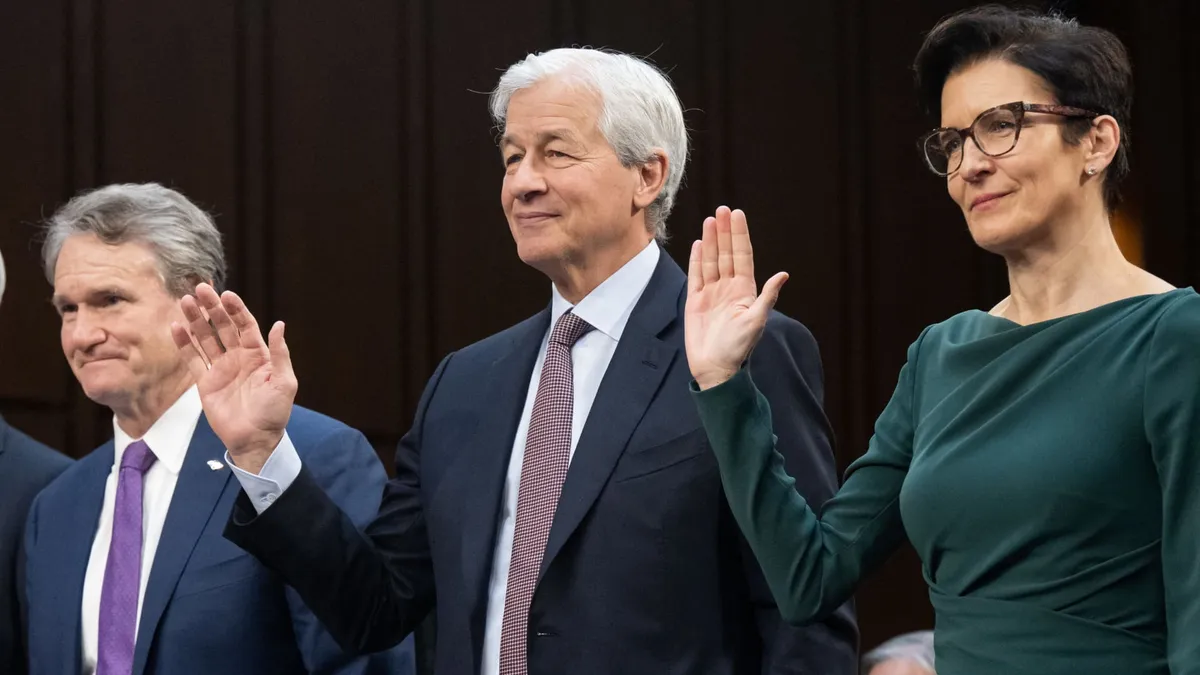
In the world of finance, things are looking surprisingly positive, at least for the moment. Wall Street has been thriving due to a significant boom in stock and bond trading, alongside a resurgence in corporate acquisitions and substantial loan activity. Reports from the largest U.S. banks indicate that Main Street is also holding steady, as American consumers continue to spend, borrow, and repay their loans effectively.
The financial landscape has become remarkably profitable for financial firms. The six largest U.S. banks reported a staggering combined profit of approximately $39 billion for the second quarter, surpassing analysts' expectations and showcasing a more than 20% increase from core earnings compared to the same period last year. This impressive performance follows a challenging start to the quarter, which began with market volatility triggered by President Donald Trump's sweeping tariffs on April 2.
Initially, economists from JPMorgan Chase predicted that these policies could lead to a recession within the year. However, markets rebounded after Trump responded to concerns regarding U.S. bonds by postponing the most severe tariffs on various trading partners. As a result, investors have begun to dismiss the administration's tariff announcements as mere noise, allowing corporate leaders to engage in multibillion-dollar transactions, as indicated by recent bank results.
Wells Fargo banking analyst Mike Mayo highlighted the remarkable turnaround, stating, "Look how far the world's come in three months." The quarter saw a boost in investment banking, loan growth, and overall optimism regarding economic scenarios. With discussions of a recession fading, the positive sentiment was especially evident at JPMorgan, the largest and most profitable bank in the U.S., which reported nearly $15 billion in quarterly profit—almost equal to the combined profits of the next three largest banks.
JPMorgan's trading operations benefited from the turbulent market conditions fueled by Trump's fluctuating policy statements. However, the true surprise came from investment banking, where revenue soared by 7%, exceeding analysts' expectations by $450 million. This surge reflects a willingness among corporations to navigate uncertainty and proceed with transactions, according to JPMorgan CFO Jeremy Barnum.
The positive trends didn't stop with corporate optimism. JPMorgan's internal indicators of U.S. economic risks showed a significant decrease from the first quarter, suggesting a diminished likelihood of a recession leading to a spike in unemployment and impaired consumer debt repayment. The bank's provision for credit losses was 14% smaller than in the previous quarter, reinforcing the notion that the economy is on a soft landing trajectory, as Barnum articulated.
Moreover, both consumers and corporations are borrowing more, with JPMorgan reporting a 5% increase in loan growth compared to last year, driven by rising credit card and wholesale loans. These statistics indicate that banks are currently signaling a favorable outlook for the U.S. economy in the early months of Trump's second presidency, despite the backdrop of geopolitical turbulence.
Even JPMorgan CEO Jamie Dimon, known for his cautious approach, expressed a sense of optimism regarding the economy, stating, "It's been resilient, and hopefully it'll continue to be." He emphasized the importance of preparing for uncertainties while maintaining a hopeful outlook. Dimon also pointed out that the global economy has become more diversified and stable compared to two decades ago.
With Trump's recent spending bill preserving corporate tax rates and expanding business deductions, along with ongoing deregulation efforts, the economic environment appears conducive for banks. The Federal Reserve's proposal to adjust capital requirements for lower-risk assets could free up billions for banks to enhance share buybacks, acquire competitors, or fuel further loan growth, as executives have noted.
Notably, even banks that faced challenges in the past, like Wells Fargo and Citigroup, are showing signs of recovery. Wells Fargo CEO Charlie Scharf celebrated the removal of Federal Reserve restrictions on the bank's balance sheet, expressing excitement about the current environment. The bank has recently issued $2,000 bonuses to employees, citing positive deposit flows and new account growth as indicators of progress.
Similarly, Citigroup's stock has surged nearly 30% this year as CEO Jane Fraser implements a successful turnaround strategy. Fraser remarked on the resilience of the U.S. economy, attributing its strength to the adaptability of the American entrepreneur and a robust consumer base. As she engages with CEOs, she remains impressed by the private sector's ability to navigate challenges effectively.
As the financial sector continues to thrive amid a complex economic landscape, the outlook remains positive for banks and the broader economy. With strong corporate earnings, increased consumer borrowing, and a resilient economic environment, the banking industry is indeed firing on all cylinders. However, as always, the potential for rapid shifts in sentiment and external risks must be considered as the landscape evolves.